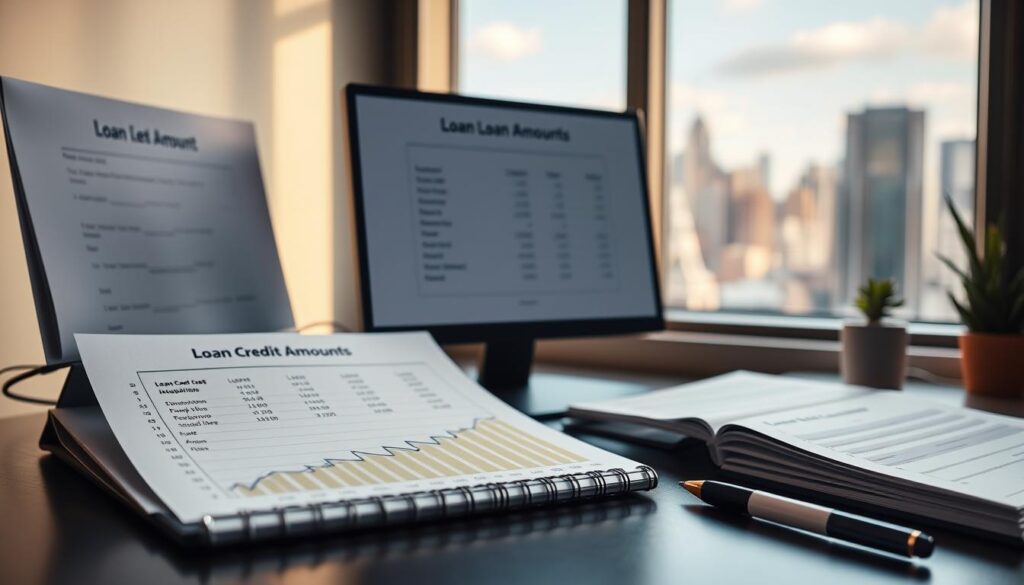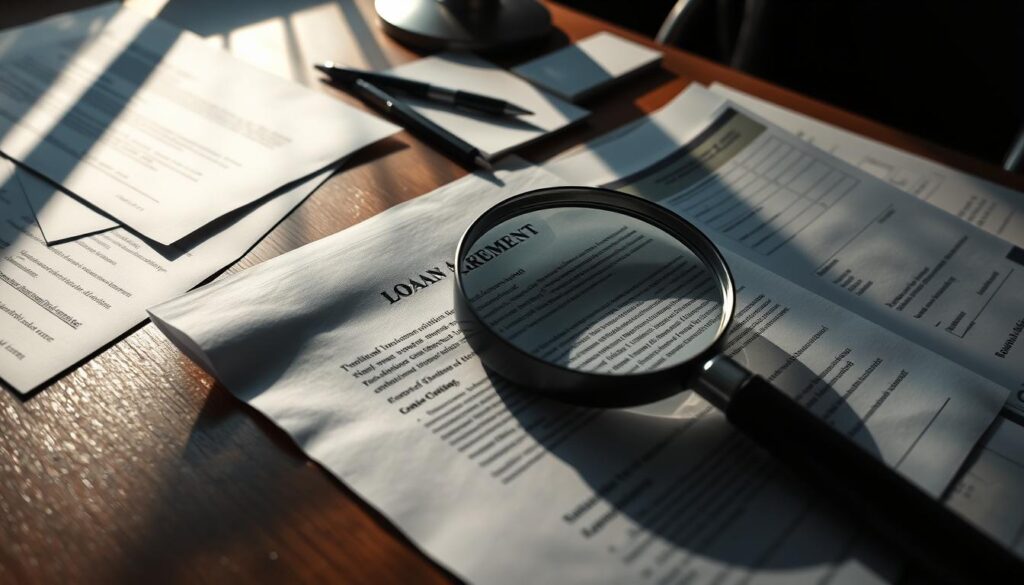Bad Credit Loans: Find the Funding You Need
Did you know that millions of Americans struggle with poor credit scores? This makes it hard for them to get funding when they need it. It’s a big problem, mainly during financial emergencies.
We know that having a bad credit history doesn’t mean you’re not good with money. Bad credit personal loans help people who can’t get traditional loans because of their credit.
These loans are a good option for those in need. They provide the money needed for unexpected costs or financial gaps. By looking into loans for bad credit, people can get the financial help they need.
Key Takeaways
- Bad credit loans provide funding options for individuals with poor credit scores.
- These loans are designed to assist those who may not qualify for traditional loans.
- Bad credit personal loans can be used to cover unexpected expenses or financial gaps.
- Exploring loans for bad credit can help individuals find necessary financial support.
- Having a bad credit history doesn’t mean you’re not creditworthy.
Understanding Bad Credit: What It Means For You
Bad credit can make it hard to get a loan. But knowing what it means can help you make better choices. It’s important to understand bad credit and how it affects your money health.
Definition of Bad Credit
Bad credit means you have a low credit score. Scores between 300 and 579 are considered bad. This tells lenders you might have had trouble with debt before.
Even with bad credit, you can still get loans. But, you might get worse terms, like higher interest rates.
How Credit Scores Are Calculated
Credit scores are based on a few things:
- Payment history (35%): How well you’ve paid on time.
- Credit utilization (30%): How much of your credit card limits you use.
- Length of credit history (15%): How long you’ve had credit.
- Credit mix (10%): The types of credit you have.
- New credit (10%): New accounts and credit checks.
Types of Loans Available for Bad Credit
People with bad credit have many loan options. Each has its own good and bad points. Knowing what each loan is about helps you choose wisely.
Personal Loans
Personal loans are a common choice for bad credit. Banks, credit unions, and online lenders offer them. You can use them for debt consolidation or unexpected bills. For example, personal loans for bad credit are available for scores as low as 580.
When looking at personal loans, check the interest rates and terms. Different lenders offer different deals. It’s smart to compare them.
Secured vs. Unsecured Loans
Loans are either secured or unsecured. Secured loans need collateral, like a car or property. They usually have lower interest rates because the lender is safer.
Unsecured loans don’t need collateral but have higher interest rates. This is because the lender takes more risk. Knowing the difference is key to picking the right loan for you.
Payday Loans
Payday loans are for quick cash until your next paycheck. They have high interest rates and fees. While they offer fast cash, think carefully about the terms and risks.
Title Loans
Title loans use your vehicle’s title as collateral. They offer quick cash but come with big risks, like losing your vehicle if you can’t pay back. Weigh the pros and cons before getting a title loan.
Understanding the different loans for bad credit helps you choose the best one for your situation.
Where to Find Bad Credit Loans
Looking for bad credit loans can lead you to many lenders. Each lender has its own rules and benefits. We’ll look at the different lenders you might find.
Traditional Banks
Traditional banks are a good starting point for loans. They might have stricter rules, but some offer loans for bad credit. One plus is the chance for lower interest rates. But, the process can take a while, and approval isn’t sure.
Online Lenders
Online lenders are popular for bad credit loans. They’re easy to use and have softer rules. They look at more than just credit scores, making them open to more people. But, the rates might be higher.
Credit Unions
Credit unions are owned by their members and might offer better deals. They often have easier rules and lower rates than banks. To get into a credit union, you usually need to join.
| Lender Type | Interest Rates | Approval Ease | Membership Requirement |
|---|---|---|---|
| Traditional Banks | Lower | Stricter | No |
| Online Lenders | Higher | More Lenient | No |
| Credit Unions | Lower to Moderate | More Lenient | Yes |
In conclusion, finding a bad credit loan means looking at different options. Knowing the good and bad of banks, online lenders, and credit unions helps you choose wisely.
The Application Process for Bad Credit Loans
Applying for bad credit loans can seem tough. But knowing what you need can make it easier. It’s important to have the right documents and information ready to go smoothly.
Documentation You’ll Need
To get a bad credit loan, you’ll need to show proof of income and ID. The exact papers needed might change based on the lender. But usually, you’ll need:
- Proof of income (pay stubs, bank statements)
- Identification (driver’s license, passport)
- Proof of residence (utility bills, lease agreement)
Having these documents ready can make the application process faster.
Common Application Questions
Lenders ask several questions to check if you can pay back the loan. Some common ones are:
- What is your income source?
- How long have you been employed?
- What are your monthly expenses?
Being ready to answer these can help you finish the application quickly.
How to Improve Your Chances of Approval
To get approved, show you have a steady income and plan to pay back the loan. Here are some tips:
- Provide accurate and detailed information
- Show a stable employment history
- Keep your debt-to-income ratio low
By doing these, you show you’re a reliable borrower. This can help you get approved.
As Forbes says, “The key to getting approved for a bad credit loan is to show you can repay it.” This shows how important it is to have a solid financial plan and repayment strategy.
Interest Rates: What to Expect with Bad Credit Loans
Understanding the interest rates for bad credit loans is key to making smart financial choices. Bad credit can lead to higher interest rates, affecting the loan’s total cost.
Comparison of Rates from Different Lenders
Interest rates for bad credit loans vary by lender. Banks, online lenders, and credit unions set rates based on risk.
| Lender Type | Average Interest Rate |
|---|---|
| Traditional Banks | 15% – 25% |
| Online Lenders | 10% – 30% |
| Credit Unions | 12% – 20% |
Factors Affecting Interest Rates
Several factors influence the interest rate on bad credit loans. These include your credit score, loan amount, term, and the lender’s policies.
- CREDIT SCORE: A lower credit score means a higher interest rate.
- LOAN AMOUNT: Larger loans may have different rates than smaller ones.
- LOAN TERM: The loan’s duration can affect the rate.
- LENDER’S POLICIES: Each lender has its own risk level and pricing.
Understanding APR vs. Interest Rate
It’s crucial to know the difference between APR and interest rate. APR includes the interest rate and other fees and charges.
“The APR shows the total cost of the loan, making it a better measure than the interest rate alone.”
To show the difference:
| Loan Details | Interest Rate | APR |
|---|---|---|
| $1,000 Loan for 1 Year | 15% | 18% |
| $5,000 Loan for 3 Years | 20% | 22% |
Loan Amounts: How Much Can You Borrow?
Understanding loan amounts for bad credit loans is key to smart financial choices. The amount you can borrow depends on several things. These include the lender’s rules, your income, and your credit score.
Minimum and Maximum Loan Amounts
Lenders offer loans in various sizes. You can get small, short-term loans or bigger, longer-term loans. The smallest loan might be $100, while the largest can be up to $50,000 or more for certain loans.
Here is a table showing typical loan amount ranges from different lenders:
| Lender Type | Minimum Loan Amount | Maximum Loan Amount |
|---|---|---|
| Payday Lenders | $100 | $1,000 |
| Online Lenders | $500 | $20,000 |
| Credit Unions | $1,000 | $50,000 |
| Traditional Banks | $2,000 | $100,000 |
Considerations for Smaller Loans
Smaller loans, usually under $1,000, are for emergencies or unexpected costs. When looking at a small loan, check the interest rate and how long you’ll pay it back. Make sure it fits your budget.
Scaling Up for Larger Needs
For bigger loans, you might need to put up collateral or meet stricter requirements. Always think about if you can really pay back the loan to avoid more financial trouble.

Knowing about loan amounts for bad credit loans helps you make better choices. By looking at the minimum and maximum amounts and what to consider, you can better understand the lending world.
Repayment Terms: Know Your Options
Repayment terms for bad credit loans vary a lot. They offer different solutions for borrowers. It’s key to understand these terms to manage your money well.
Short-Term vs. Long-Term Loans
Bad credit loans can be short-term or long-term. Short-term loans are paid back in a few months or weeks. They’re good for emergencies. Long-term loans take years to pay off. They make monthly payments easier.
Choosing between short-term and long-term loans depends on your finances. Here are some things to think about:
- Short-term loans: They have higher interest rates but are paid back fast, saving on interest.
- Long-term loans: They have lower monthly payments but cost more in interest over time.
Fixed vs. Variable Interest Rates
Interest rates are another important part of repayment terms. A fixed interest rate stays the same, making payments predictable. A variable interest rate can change with the market, affecting payments.
Here’s what to consider when choosing between fixed and variable rates:
- Fixed rates are stable and good for those who like predictable payments.
- Variable rates might start low but can go up, fitting those who can handle rate changes.
Knowing about repayment terms, like loan length and interest rate type, is crucial. Borrowers should look at their options carefully. They should think about their financial situation to pick the best terms.
Alternative Options to Loans for Bad Credit
If you have bad credit, there are other ways to get help. These options can help you manage money problems when banks say no.
Credit Counseling Services
Credit counseling services help you deal with debt and improve your credit. They work with you to make a plan to pay off debts and get back on track financially.
Benefits of Credit Counseling:
- Debt management plans tailored to your financial situation
- Education on budgeting and financial literacy
- Potential to reduce debt and improve credit scores over time
Peer-to-Peer Lending
Peer-to-peer lending connects you directly with investors. This can offer more flexible terms than banks. It’s a good option if you can’t get a loan from a bank.
Key aspects to consider:
- Varied interest rates based on creditworthiness
- The potential for lower fees compared to traditional lending
- A more streamlined application process
Personal Installment Loans
Personal installment loans give you a lump sum to pay back in installments. You can use them for many things, like paying off debt or buying big items.
| Loan Aspect | Description | Considerations |
|---|---|---|
| Loan Amount | Varied, based on lender and borrower’s needs | Ensure the amount borrowed aligns with your financial capacity |
| Repayment Terms | Fixed installments over a predetermined period | Choose a repayment term that fits your budget |
| Interest Rates | May vary based on credit score and lender | Understand the total cost of the loan, including interest |
The Importance of Reading the Fine Print
Don’t overlook the fine print when applying for a bad credit loan; it’s where the real details lie. When we sign up for a loan, we’re not just agreeing to the loan amount and interest rate. We’re also committing to a myriad of other terms and conditions that can significantly impact our financial situation.
Understanding these terms is crucial, as they can include fees and charges that add to the overall cost of the loan. Fees and charges can vary widely between lenders, and not all of them are immediately apparent. For instance, some lenders might charge origination fees, late payment fees, or even prepayment penalties.
Understanding Fees and Charges
Fees associated with bad credit loans can be substantial. They might include:
- Origination fees, which are deducted from the loan amount
- Late payment fees, which can be triggered by missing a payment deadline
- Application fees, which some lenders charge for processing the loan application
To give you a clearer picture, here’s a comparison of typical fees charged by different types of lenders:
| Lender Type | Origination Fee | Late Payment Fee | Application Fee |
|---|---|---|---|
| Traditional Banks | 1% – 3% | $25 – $50 | $0 – $100 |
| Online Lenders | 2% – 5% | $30 – $60 | $0 – $200 |
| Credit Unions | 0% – 1% | $15 – $30 | $0 – $50 |
Prepayment Penalties
Some lenders impose prepayment penalties if we pay off the loan earlier than the agreed-upon term. This can be a significant drawback for borrowers who want to pay off their loans quickly.
Prepayment penalties can be calculated in different ways, such as a percentage of the outstanding loan balance or a fixed amount. It’s essential to understand how these penalties work and whether they apply to our loan agreement.
Loan Terms You Should Look for
When reviewing the fine print, there are several key loan terms to look out for:
- Interest Rate: The annual percentage rate (APR) that determines the interest we’ll pay over the loan term.
- Repayment Term: The duration of the loan, which can significantly impact our monthly payments.
- Fees and Charges: As discussed, these can add to the overall cost of the loan.
By carefully examining these terms and understanding the implications of the fine print, we can make more informed decisions when applying for a bad credit loan.

Tips for Improving Your Credit Score
Improving your credit score needs a smart plan. A good score shows lenders you’re reliable. It’s more than just a number.
Steps to Take Before Applying for a Loan
Before you apply for a loan, there are steps to boost your score. Start by checking your credit report for mistakes. Fixing these can raise your score.
Next, work on paying down your debt, like credit card balances. Keep your credit use below 30% of your limit. This is key.
Always pay on time. Late payments hurt your score a lot. Use reminders or automate payments to avoid missing them.
Building Credit Responsibly
Building good credit means being smart and disciplined with money. Using a secured card or being an authorized user can help. These methods show you’re responsible.
“The key to building a strong credit profile is to demonstrate responsible credit behavior over time.”
Here’s how different actions affect your score:
| Credit Behavior | Impact on Credit Score |
|---|---|
| Making on-time payments | Positive |
| High credit utilization | Negative |
| Applying for multiple credit cards | Negative (in the short term) |
Knowing what affects your score and managing your credit well can improve your financial health. This boosts your chances of getting loans with better terms.
Success Stories: Navigating Bad Credit and Loans
Many people have overcome bad credit to get the funding they need. Their stories offer hope and lessons for those facing similar challenges.
Real-Life Examples of Overcoming Bad Credit
A homeowner with a low credit score got a loan to renovate their home. They worked with a lender who looked at more than just credit scores. This included income stability and the property’s value.
A small business owner also used a bad credit loan to grow their business. Despite a low credit score, they got a loan by offering collateral and showing a solid business plan.
Lessons Learned from Successful Borrowers
Successful borrowers often share common traits. They understand their finances, explore different loans, and pay on time.
Key Takeaways:
- Know your financial situation before applying for a loan.
- Look at various loan options to find the right one for you.
- Make sure to pay back the loan on time to avoid more credit damage.
Let’s look at a comparison of loan options for those with bad credit.
| Loan Type | Interest Rate | Repayment Term |
|---|---|---|
| Personal Loan | 10%-20% | 1-5 years |
| Secured Loan | 8%-15% | 2-10 years |
| Payday Loan | 15%-30% | Short-term (varies) |
The table shows the differences in interest rates and repayment terms. It’s crucial to understand these to make a good choice.
Final Thoughts: Making Informed Decisions on Loans
Understanding bad credit loans is key. You need to know your financial situation well.
Assessing Your Financial Standing
Start by looking at your finances. Check your income, expenses, and debts. This helps figure out how much you can borrow.
Professional Guidance
Getting advice from experts is helpful. They can guide you on managing debt and boosting your credit score. They’ll help you make a plan for your financial goals.
Being careful and informed about bad credit loans is important. It helps you make choices that fit your financial health and goals. Always think about your options and ask for advice when needed. This ensures you’re making the right choice for you.









